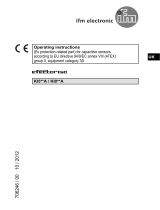
April 2019
4
Quick Start Guide
For devices following the new device dashboard, refer to the Fast Keys below:
D/A trim 1, 2, 2, 2 Scaled D/A trim 1, 2, 2, 3
Damping values 1, 1, 10 Sensor connection 1, 3, 2, 1, 1
Date 1, 3, 4, 2 Sensor 1 setup 1, 3, 2, 1, 2
Descriptor 1, 3, 4, 3 Sensor serial number 1, 3, 2, 1, 3
Device output configuration 1, 3, 3 Sensor 1 trim-factory 1, 2, 2, 1, 2
Diagnostics and service 1, 2 Sensor type 1, 3, 2, 1, 1
Filter 50/60 Hz 1, 3, 5, 1 Software revision 1, 4, 1
Hardware rev 1, 4, 1 Status 1, 2, 1, 4
Intermittent detect 1, 3, 5, 4 Terminal temperature 1, 3, 2, 2,
Loop test 1, 2, 1, 1 Test device 1, 2, 1
LRV (Lower Range Value) 1, 1, 6 URV (Upper Range Value) 1, 1, 7
LSL (Lower Sensor Limit) 1, 1, 8 USL (Upper Sensor Limit) 1, 1, 9
Measurement filtering 1, 3, 5 Variable mapping 1, 3, 1
Message 1, 3, 4, 4 Variable re-map 1, 3, 1, 3
Num req preams 1, 3, 3, 3, 2 Write protect 1, 2, 3
Open sensor holdoff 1, 3, 5, 3 2-wire offset 1, 3, 2, 1, 2, 1
Percent range 1, 1, 5
Function Fast Keys Function Fast Keys
Active calibrator 3, 4, 1, 3 Poll Address 2, 2, 4, 1
Alarm saturation 2, 2, 2, 5 Process temperature 1, 3
AO alarm type 2, 2, 2, 5 Process variables 3, 2, 1
Burst mode 2, 2, 4, 2 PV damping 2, 2, 1, 6
Calibration 3, 4, 1, 1 PV unit 2, 2, 1, 4
Configuration 2, 2, 2, 4 Range values 2, 2, 2, 4
D/A trim 3, 4 Scaled D/A trim 3, 4, 3
Damping values 2, 2, 1, 6 Sensor connection 2, 2, 1, 3
Date 2, 2, 3, 1, 2 Sensor 1 set up 2, 1, 1
Descriptor 2, 2, 3, 1, 4 Sensor serial number 1, 7, 1, 4
Device Info 1, 7 Sensor 1 trim 3, 4, 1, 1
Device output configuration 2, 2, 2, 4 Sensor 1 trim- factory 3, 4, 1, 2
Filter 50/60 Hz 2, 2, 3, 7, 1 Sensor type 2, 2, 1, 2
Hardware rev 1, 7, 2, 3 Software revision 1, 7, 2, 4
HART
®
output 1, 7, 2, 1 Status 1, 1
Loop test 3, 5, 1 Tag 2, 2, 3, 1,1
LVR (Lower Range Value) 2, 2, 2, 4, 3 Terminal temperature 3, 3, 2
Function Fast Keys Function Fast Keys
00825-0100-4825_RevJB.fm Page 4 Wednesday, April 17, 2019 10:23 AM





















